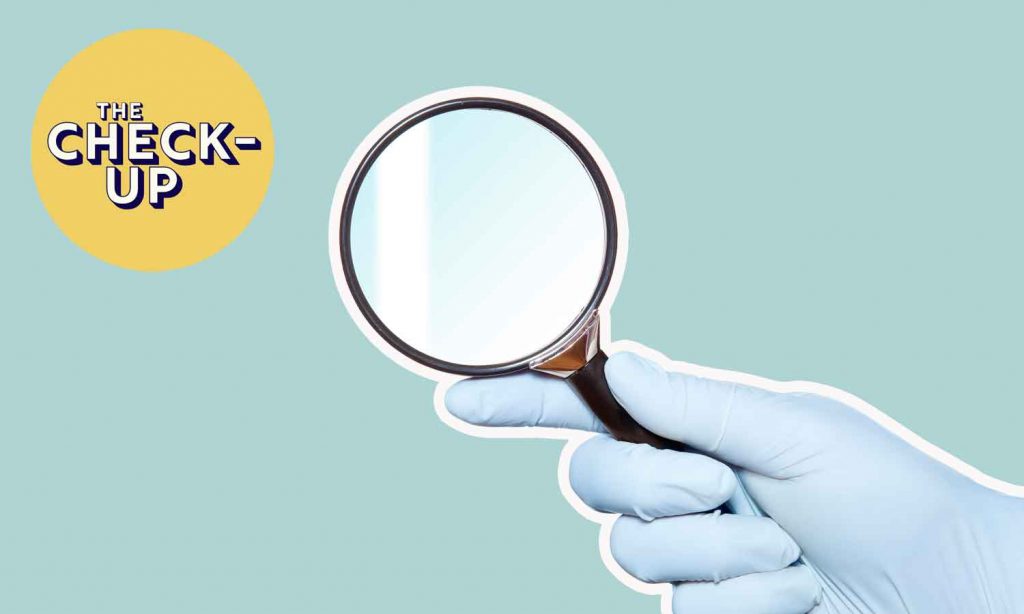During a recent survey of The Latch’s audience, we discovered that 37% have never had a skin check before and 27% haven’t had one in a few years. While scary, these figures aren’t surprising given that Australia has one of the highest rates of skin cancer in the world. Despite the prevalence of skin cancer amongst Australians, many of these cases are entirely preventable and, when detected and treated early, 90% of cases can usually be cured.
With this in mind, The Latch has created The Check-Up — a content series that will educate you on all things sun safety as well as the seriousness of skin cancer and specifically, melanoma. Check back each week for helpful and informative content on everything you need to know about this important topic.
If you’ve never had your skin professionally checked by a doctor before, it might feel a little daunting. But, you really have nothing to worry about. While self-checking is a great practice to carry out monthly at home, booking in for a professional skin check once a year is a good way to stay on top of your skin health.
To find out what to expect when it comes to professional skin checks, we turned to Dr Annika Smith, a dermatologist with a special interest in medical dermatology and skin cancer diagnostics, management and prevention, who also works with Melanoma Institute Australia.
According to Dr Smith, “every clinician’s approach is individual but broadly speaking, it is a top-to-toe assessment of the entire skin surface encompassing the head (face and scalp), neck, arms, legs, and trunk (chest and back), palms and soles. We also typically ask about concealed sites, for example, hidden by underwear and inspect if there are patient concerns at those sites”.
What to expect
When you arrive for your appointment, the doctor will talk you through the skin check if it is your first time. “Generally, a patient is informed of the process and they’re asked to undress to their underwear, to facilitate the full skin assessment,” said Dr Smith. “We scan the skin surface visually as well as with the aid of the dermatoscope, which is a handheld magnifying device, which increases the diagnostic accuracy for melanoma, in particular.”
For those who have had prior experience with melanoma or non-melanoma skin cancer, the doctor would also likely examine any relevant scar sites as well as the lymph node basins.
“As part of a full skin check visit, you may also require dedicated images of moles or other lesions on the skin,” said Dr Smith. “For people who are particularly high risk for melanoma, that is with a high mole count or a high number of atypical moles, it may also be recommended they have total body photography done. This allows the clinician to determine with greater certainty if there are new or changing lesions at subsequent reviews, as one is able to objectively compare with baseline.”
As for the length of the appointment, it shouldn’t take too long at all but does depend on each individual. “It very much depends on the complexity of the patient, their skin cancer history, the number of moles they may have, their degree of sun damage or the number of lesions of concern identified during the examination,” said Dr Smith, “But generally speaking about 15 to 20 minutes would be a generous allocation of time for the entire process.”
How to prepare
While there’s not much prep that needs to be done before a skin check, there are a few things you can do to make the process a little easier for your doctor. For example, Dr Smith recommends avoiding the use of fake tan in the lead up to your appointment so the doctor is able to properly “confirm the appearance of lesions on the skin”. Same goes for fake or acrylic nails as these block visualisation of the nail bed.
“While rare, melanoma can certainly affect the nail unit,” said Dr Smith. “Ideally, I also recommend coming without makeup, and with a hairstyle that can readily be undone so the scalp and the scalp margins can be inspected.
“Sometimes I find it useful if someone’s checked the skin beforehand or had someone at home help, to maybe have a list of lesions or concerns that they had so that they can raise them with the doctor and we can ensure all their concerns are addressed at that point in time,” Dr Smith said.
If you have any questions pre or post your skin check, simply ask your doctor and they will be able to answer them for you. If you have any concerns about your skin or changes in your moles, head straight to your doctor to get a professional opinion.
Skin Check Champions will be encouraging Australians to “Strip Off for Skin Cancer” during National Skin Cancer Action Week (Nov 21-27). For more information, click here and to get involved, click here, book a skin check via the local clinic finder and post some photos and videos on your socials showing a little skin.
Read more stories from The Latch and follow us on Facebook.

